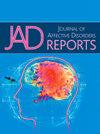Sociodemographic predictors of depression among economically vulnerable mothers in urban Uruguay
Q3 Psychology
引用次数: 0
Abstract
Background
Depression is a leading cause of disability worldwide, affecting women twice as much as men. In Latin America, rates are double the global average. Uruguay, despite investing in mental health, has the continent’s highest and still-rising suicide rate.
Methods
We examine predictors of depression among a sample of economically vulnerable mothers in Uruguay (N = 467). Depression was measured using the Center for Epidemiologic Studies Depression Scale (CES-D). Sociodemographic predictors were added in blocks using hierarchical regression with robust standard errors.
Results
On average, survey respondents were 29 years of age (SD = 6.65), with children aged 24 months (SD = 5.97). The average CES-D score was 6.9 (range 0–46), with 12 % of respondents at risk (CES-D ≥ 16). Mothers who had completed middle or secondary school had lower levels. In contrast, experiencing a negative economic shock in the past year and receiving government assistance were associated with higher depression. Mothers receiving government assistance were 8 percentage points more likely to be at risk of depression, suggesting a subgroup prevalence of ∼ 20 %- a figure that aligns closely with prior estimates in similar populations. Among subgroups, mothers (not receiving assistance) who worked part-time had higher CES-D scores than those working full-time.
Limitations
We rely on self-reported, cross-sectional data.
Conclusions
Indicators of economic strain predict increased depression levels among mothers in Uruguay. Higher education and full-time employment were protective factors. The elevated risk among mothers receiving government assistance highlights the need for integrated mental health and social support interventions.
乌拉圭城市经济弱势母亲抑郁的社会人口学预测因素
抑郁症是世界范围内致残的主要原因,对女性的影响是男性的两倍。在拉丁美洲,这一比率是全球平均水平的两倍。尽管乌拉圭在心理健康方面进行了投资,但该国的自杀率仍是非洲大陆最高的,而且仍在上升。方法研究了乌拉圭经济弱势母亲的抑郁预测因素(N = 467)。使用流行病学研究中心抑郁量表(CES-D)测量抑郁症。使用具有稳健标准误差的分层回归将社会人口学预测因子分组添加。结果调查对象平均年龄为29岁(SD = 6.65),儿童年龄为24月龄(SD = 5.97)。平均CES-D评分为6.9(范围0-46),12%的受访者存在风险(CES-D≥16)。完成初中或中学教育的母亲的水平较低。相比之下,在过去一年经历负面经济冲击和接受政府援助的人更容易抑郁。接受政府援助的母亲患抑郁症的可能性高出8个百分点,这表明亚组患病率为20%,这一数字与之前对类似人群的估计非常吻合。在亚组中,兼职母亲(不接受援助)的CES-D分数高于全职母亲。局限性:我们依赖于自我报告的横断面数据。结论经济压力指标预示着乌拉圭母亲抑郁程度的增加。高等教育和全职工作是保护因素。接受政府援助的母亲风险增加,突出表明需要采取综合心理健康和社会支助干预措施。
本文章由计算机程序翻译,如有差异,请以英文原文为准。
求助全文
约1分钟内获得全文
求助全文
来源期刊

Journal of Affective Disorders Reports
Psychology-Clinical Psychology
CiteScore
3.80
自引率
0.00%
发文量
137
审稿时长
134 days
 求助内容:
求助内容: 应助结果提醒方式:
应助结果提醒方式:


